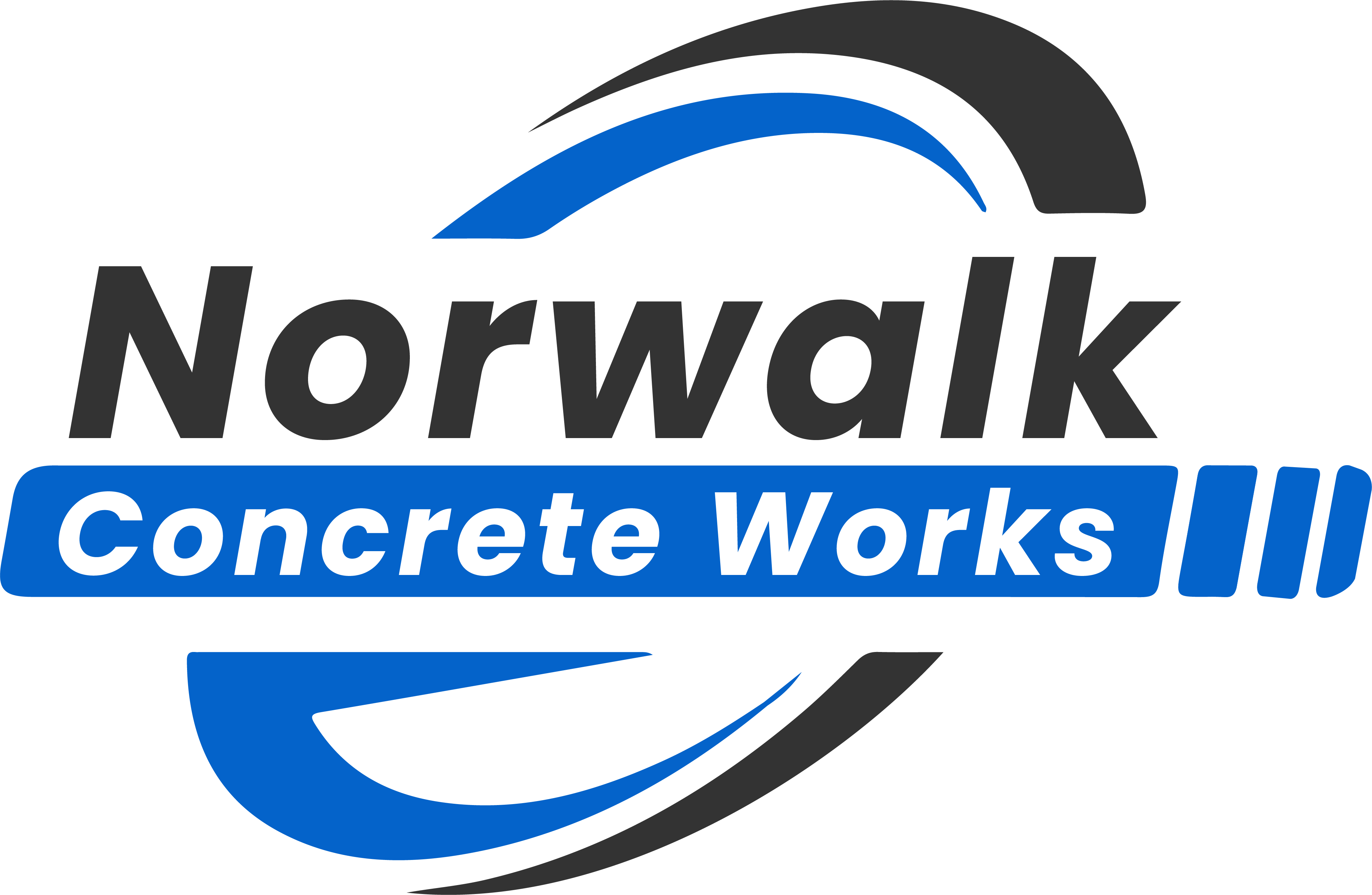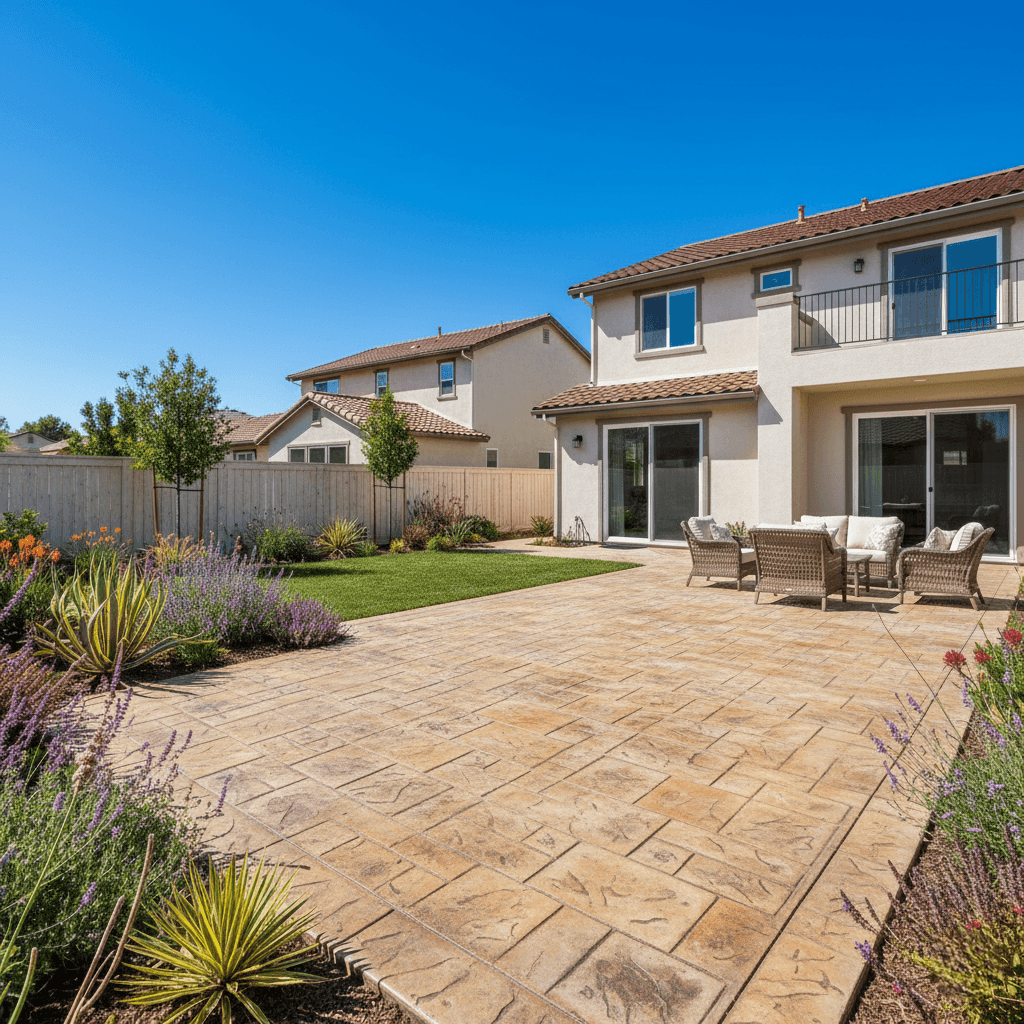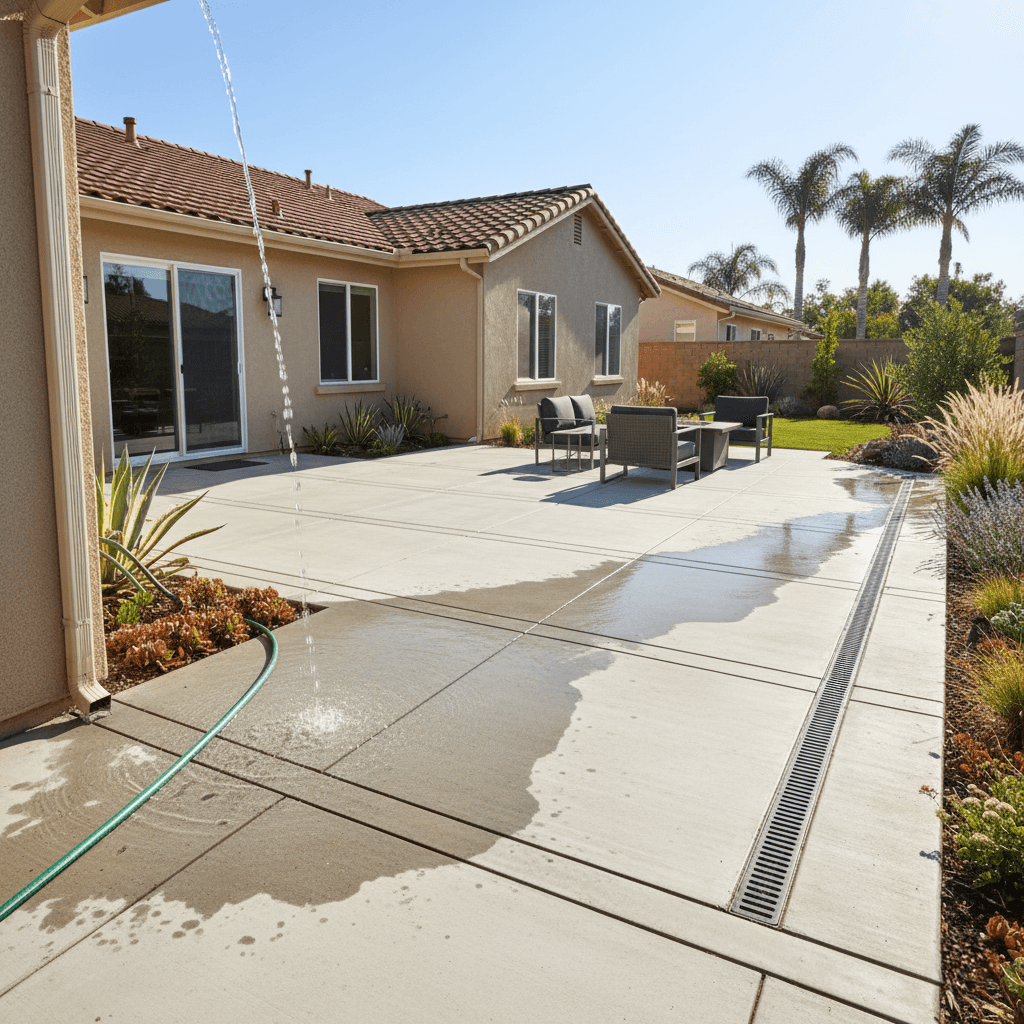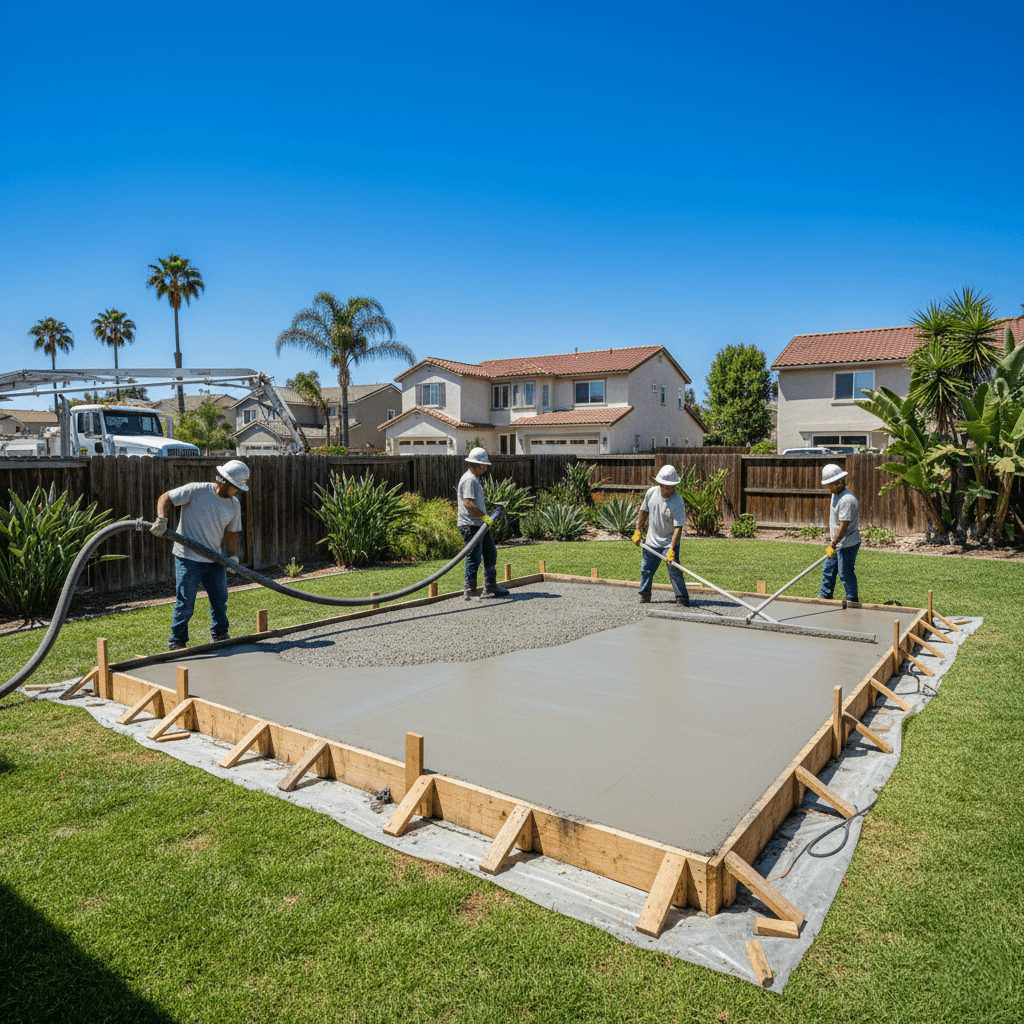
How to Protect Resurfaced Concrete in Norwalk Homes
Concrete Resurfacing Norwalk
Protecting resurfaced concrete surfaces requires strategic maintenance approaches tailored to Southern California’s unique climate challenges. Norwalk homeowners face intense UV exposure, seasonal temperature fluctuations, and minimal rainfall that create specific demands for concrete resurfacing protection and long-term performance. Professional concrete surface protection involves selecting appropriate sealers, implementing regular maintenance schedules, and understanding environmental factors that affect surface durability. Quality resurfaced concrete maintenance extends surface lifespan significantly while preserving aesthetic appeal and structural integrity throughout changing seasons. Effective protection strategies prevent costly repairs and ensure optimal return on investment for concrete resurfacing projects.
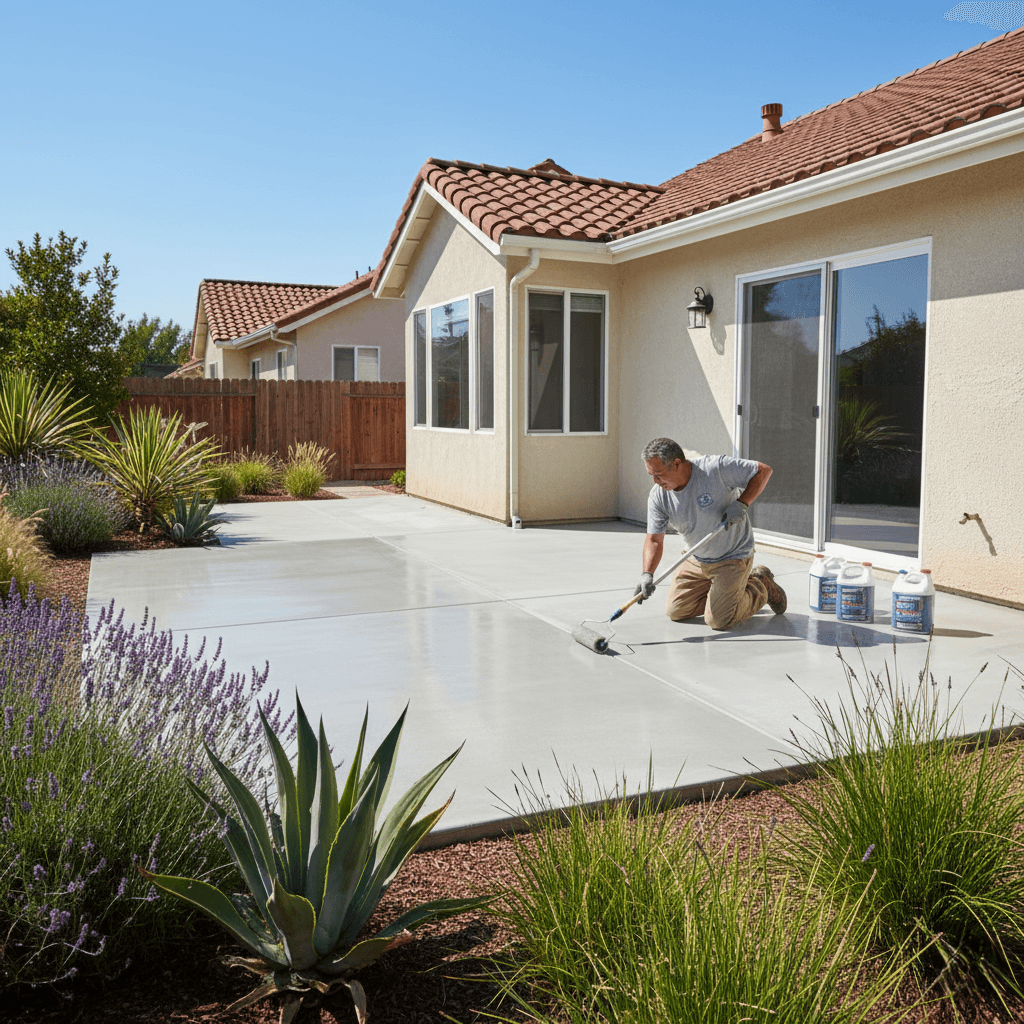
Understanding California Climate Impacts
Southern California’s Mediterranean climate presents unique challenges for resurfaced concrete surfaces, particularly intense UV radiation and dramatic temperature swings. Daily temperature variations from cool mornings to hot afternoons cause continuous expansion and contraction cycles that stress overlay materials. UV exposure degrades unprotected surfaces, causing color fading, surface chalking, and premature deterioration of coating systems.
Norwalk’s arid conditions with minimal humidity create rapid moisture evaporation that can affect curing processes and surface stability. Seasonal Santa Ana winds carry dust and debris that abrade unprotected surfaces over time. Concrete sealing Norwalk projects must account for these environmental factors to ensure optimal performance and longevity of resurfaced installations.
Essential Sealing and Protection Systems
High-quality sealers form the primary defense against environmental damage and surface degradation. Penetrating sealers work best for Southern California conditions, providing deep protection without creating surface films that can bubble or peel under intense sun exposure. These systems allow natural moisture vapor transmission while blocking water, stains, and contaminants from penetrating the surface.
UV-resistant acrylic sealers offer excellent protection against sun damage while enhancing color stability and surface appearance. Apply sealers when ambient temperatures range between 50-90°F for optimal penetration and curing. Surface coating protection should include multiple thin coats rather than single thick applications to ensure even coverage and maximum durability throughout varying weather conditions.
Maintenance Schedule Development
Establish comprehensive maintenance schedules based on local climate patterns and surface exposure levels. Monthly visual inspections help identify potential issues before they develop into major problems requiring extensive repairs. Clean surfaces quarterly using mild detergents and low-pressure water to remove dirt, dust, and organic matter that can stain or damage protective coatings.
Annual deep cleaning and sealer reapplication maintain optimal protection levels throughout Norwalk’s demanding climate conditions. Schedule major maintenance during cooler months when temperature and humidity conditions optimize application and curing processes. Resurfacing maintenance guide protocols should document all treatments, observations, and performance evaluations for future reference.
Cleaning and Care Procedures
Regular cleaning prevents debris accumulation that can trap moisture and accelerate surface deterioration. Use soft-bristled brooms for routine sweeping, avoiding steel brushes or aggressive scrubbing that can damage protective coatings. Address spills immediately to prevent staining and chemical damage to the underlying overlay materials.
Pressure washing should use moderate pressure settings (1500-2500 PSI) with wide fan nozzles to avoid damaging surface textures or protective systems. Avoid high-temperature pressure washing unless preparing surfaces for maintenance coating applications. Professional concrete durability tips emphasize gentle cleaning methods that preserve protective coatings while maintaining surface cleanliness.
Seasonal Protection Strategies
Summer protection focuses on UV defense and thermal stress management. Apply reflective coatings or light-colored sealers that reduce heat absorption and surface temperature extremes. Ensure adequate drainage around surfaces to prevent water pooling during occasional summer thunderstorms.
Winter preparation includes checking and repairing cracks or coating damage before the rainy seasons. While Norwalk experiences minimal freezing, occasional temperature drops combined with moisture can create expansion issues in compromised surfaces. Protective concrete finishes should remain flexible enough to accommodate seasonal movement without cracking or delamination.
Traffic and Usage Management
Control heavy traffic patterns on newly resurfaced concrete for at least 30 days after installation to allow complete curing and coating adhesion. Use protective mats or runners during construction activities or events that might damage surfaces. Educate family members about proper care procedures and potential damage sources.
Furniture placement should include protective pads to prevent scratching or indentation of decorative surfaces. Avoid dragging heavy objects across resurfaced areas, and use dollies or protective materials when moving equipment. Strategic traffic management extends surface life significantly while maintaining aesthetic appeal throughout high-use periods.
Chemical and Environmental Protection
Protect resurfaced surfaces from automotive fluids, fertilizers, and household chemicals that can stain or damage protective coatings. Use absorbent materials to quickly address spills and neutralize acidic substances with appropriate cleaning agents. Pool chemicals, pet waste, and garden runoff require immediate attention to prevent permanent damage.
Install proper drainage systems to direct water away from resurfaced areas, preventing pooling that can compromise coating adhesion or cause efflorescence issues. Consider landscaping modifications that reduce leaf debris, tree sap, or other organic materials that can stain surfaces. Concrete weatherproofing strategies should address all potential contamination sources systematically.
Early Warning Signs and Intervention
Monitor surfaces for color changes, texture alterations, or coating wear patterns that indicate maintenance needs. Hairline cracks, surface chalking, or water absorption changes suggest protective system deterioration requiring prompt attention. Address minor issues immediately to prevent major repairs or complete resurfacing needs.
Annual professional inspection helps identify subtle problems that homeowners might overlook. Experienced contractors can evaluate coating performance, surface integrity, and environmental stress factors affecting long-term durability. Early intervention prevents minor maintenance issues from escalating into costly replacement projects.
Professional Maintenance Services
Professional maintenance services provide expertise and specialized equipment for optimal surface care. Experienced contractors understand local climate challenges and can recommend appropriate products and schedules for specific surface types and exposure conditions. They possess professional-grade equipment and materials unavailable to homeowners.
Annual professional evaluations help optimize maintenance approaches and identify potential improvements to protection systems. Quality contractors offer maintenance programs that ensure consistent care while extending surface warranties and performance guarantees. Professional services provide peace of mind and help maintain property values through proper surface care.
At Norwalk Concrete Works, we provide comprehensive protection strategies for resurfaced concrete installations throughout Norwalk and surrounding communities. Our maintenance programs include regular inspections, professional cleaning services, and protective coating applications tailored to Southern California’s demanding climate conditions, ensuring your concrete resurfacing investment delivers maximum performance and longevity for decades to come.
